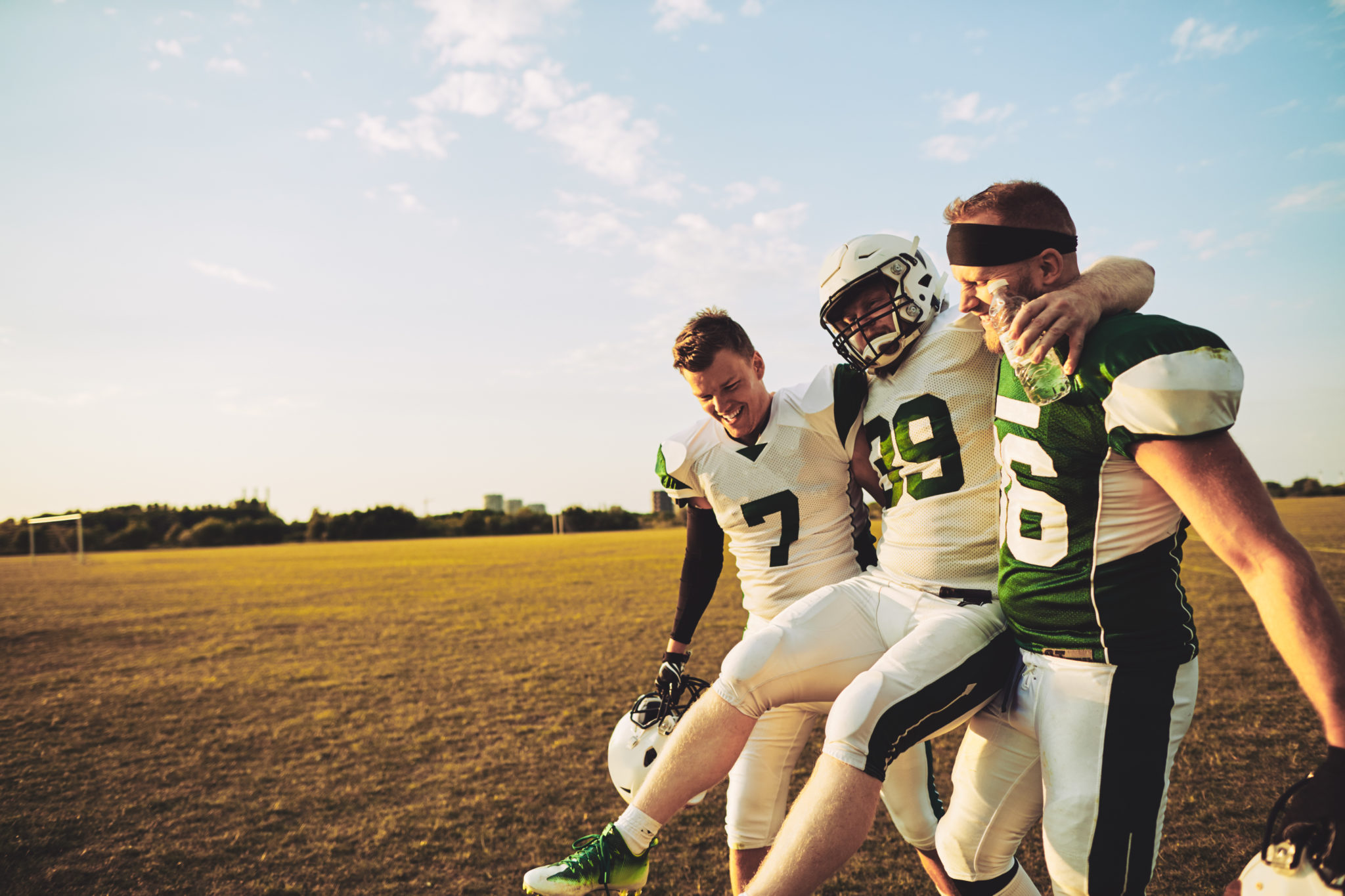Most Common Football Injuries

It's almost fall, which means it's almost time for football season! Unfortunately, with football season, comes the most common football injuries. Whether playing competitively or mostly in your backyard––sprains, tears, bruising and breaks are risks that come with the love of the game. We've prepared you with a list of the most common football injuries and how to best avoid them.
Sprains & Strains
A sprain is an overstretching or tearing of ligaments––the tough bands of fibrous tissue that connect two bones in your joints. Actively stretching and avoiding football drills––when tired or in pain––can help prevent this injury. If rest is not an option, protective braces and compression garments can help stabilize weak or strained ankles and wrists.
Fractures
This injury is usually caused by high force impact or stress, though some cases stem from bone disease. Fractures occur when the continuity of the bone is broken. Proper safety equipment and pads are an athlete's best wall of defense from fractures. A balanced diet is also key to keeping growing bones healthy. Getting the proper nutrients including calcium, protein, magnesium, phosphorus, vitamin D, potassium, and fluoride is beneficial for continued bone health.
Concussions
A concussion is a type of traumatic brain injury—or TBI—caused by a blow that causes the head and brain to move rapidly back and forth. When playing football, always make sure to wear protective equipment and that your gear fits properly. Neck strengthening exercises can also help stabilize the head during the game.
Achilles Tendonitis
The Achilles tendon is the band of tissue that connects the calf muscles at the back of the lower leg to your heel bones. Achilles tendinitis is an overuse of the Achilles tendon. Runners who have suddenly increased their intensity or length of their runs commonly see this injury.
At-home stretching and massage is the most common treatment of Achilles Tendonitis. More serious cases of Achilles tendonitis can lead to tendon tears, or ruptures, that may require surgical repair.
ACL Tear
An ACL injury is a tear or sprain to one of the major ligaments in your knee, the anterior cruciate ligament. ACL injuries most commonly occur during sudden stops or changes in direction, which is why it's one of the most common football injuries. Players avoid ACL injuries by strength training hamstring and quadricep muscles. Learning proper landing and pivoting techniques can also reduce stress on the ACL.
Torn Cartilage
Cartilage is a firm, gristle-like connective tissue, but much softer and flexible than bone. This connective tissue is found in many areas of the body including joints between bones like the elbows, knees, and ankles. Torn cartilage can cause you may long-term issues if not properly treated when the injury occurs. Cartilage can tear in almost any joint of the body but commonly happen within the knees. Cartilage tears are the most common cause of leg pain in athletes.
You can prevent tears by regularly performing exercises that strengthen your leg muscles. This will help stabilize your knee joint to protect it from injury. It's also crucial to use protective gear when playing football and a brace to support your knee during activities that may increase your risk of injury.
Spine Injuries
Spinal cord injuries may result from damage to the vertebrae, ligaments or disks of the spinal column or to the spinal cord itself. A traumatic spinal cord injury may stem from a sudden, traumatic blow to your spine that fractures, dislocates, crushes or compresses one or more of your vertebrae.
The most common football injuries can be avoided by proper stretching, strength training, much-needed rest and recovery, and wearing proper safety equipment. Be sure to communicate with your coaches. If you or a teammate are experiencing continued pain beyond an occasional bump or bruise, they may need medical attention. If your athlete has been injured, initial treatment should include rest, ice, compression, and elevation. Severe cases may require surgery to repair torn ligaments and bone. Our doctors specialize in sports medicine and are ready to get your athlete back on the field.
